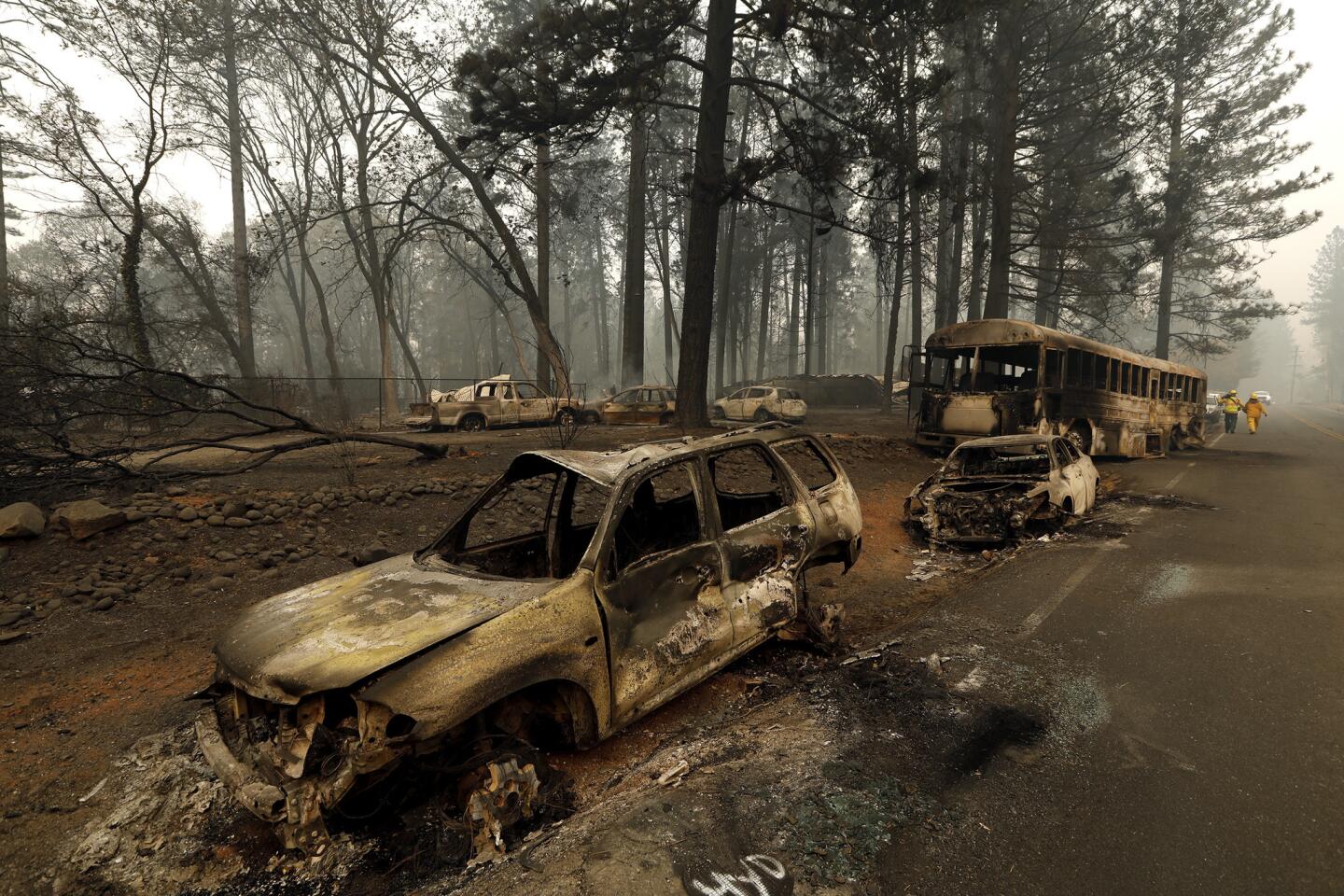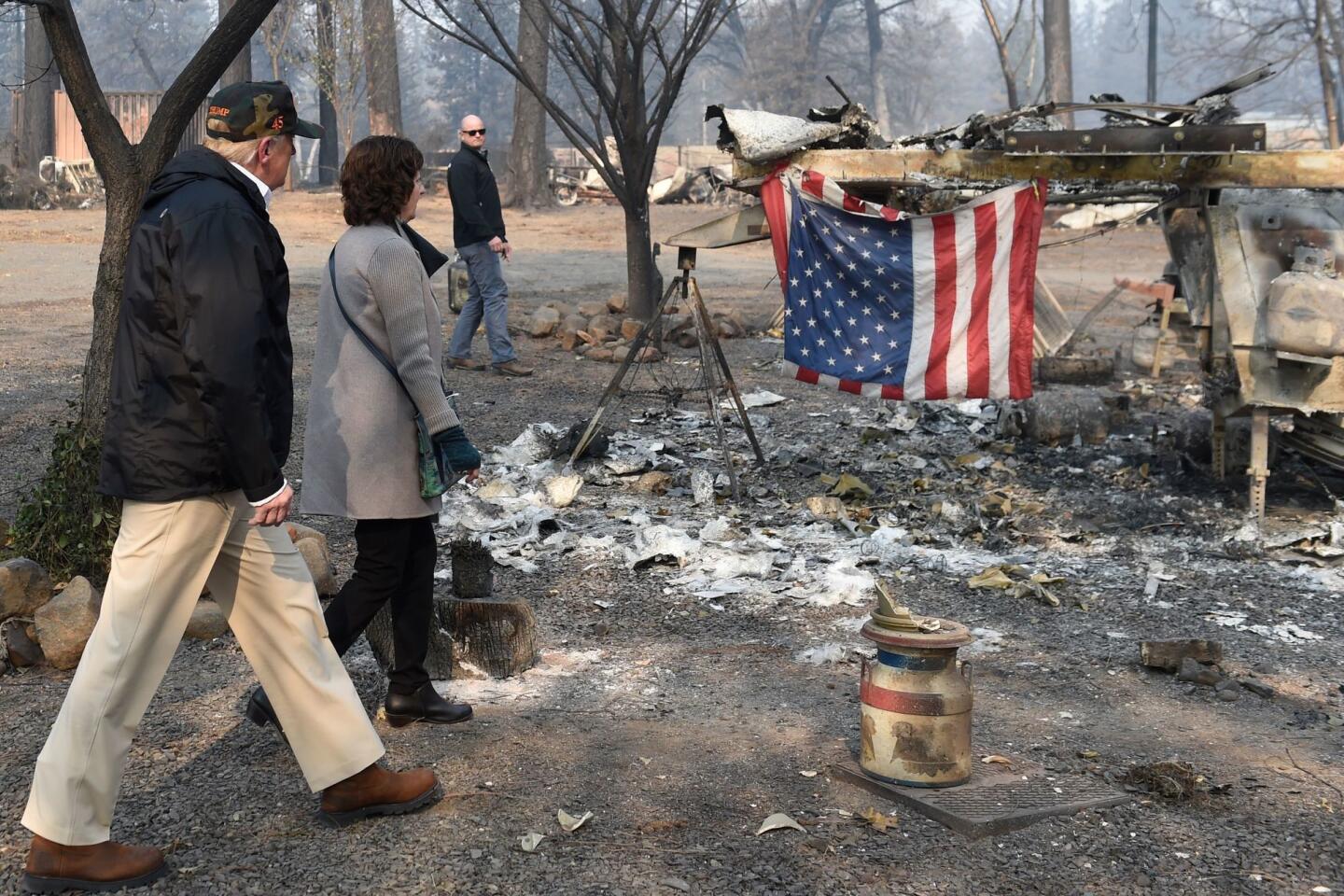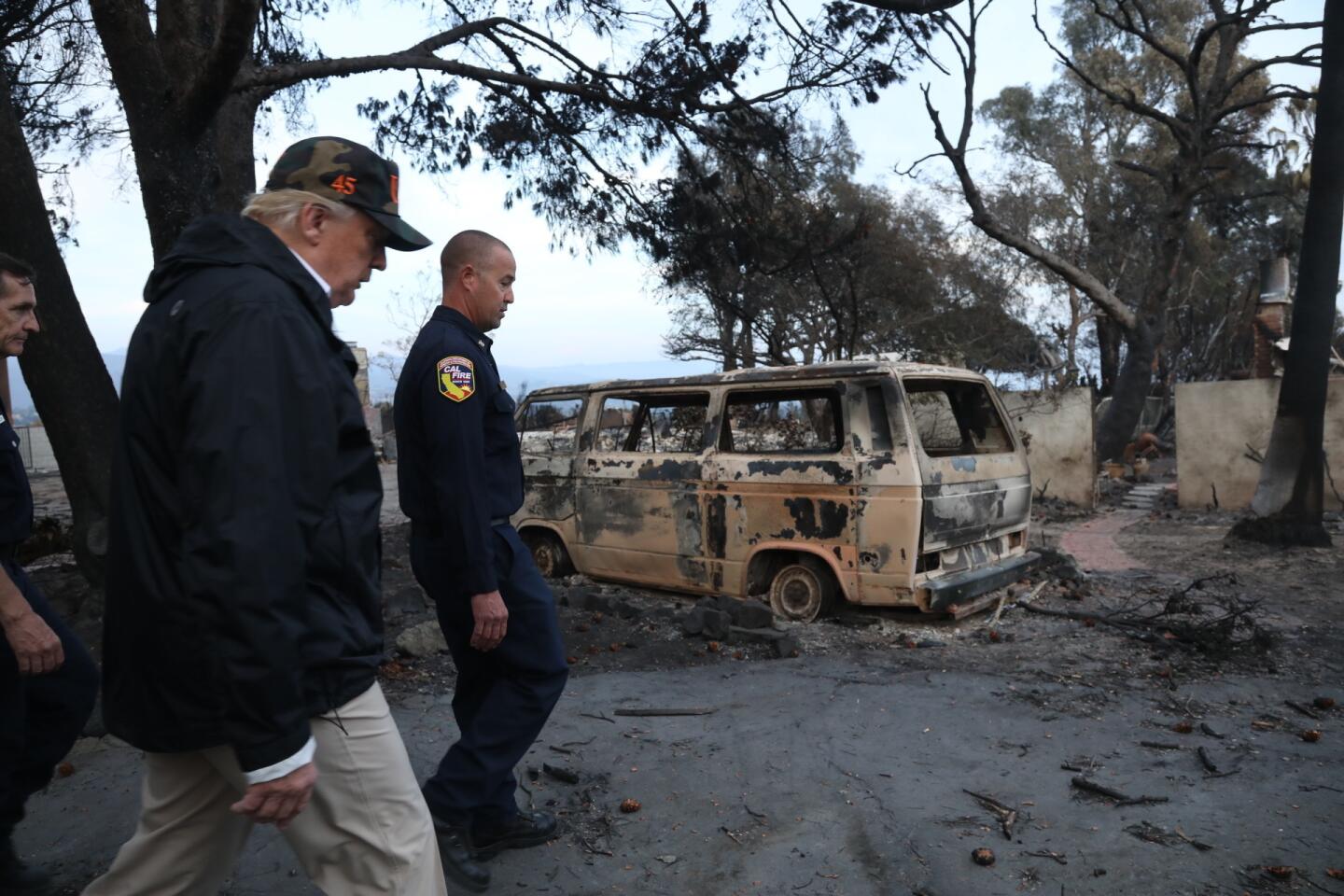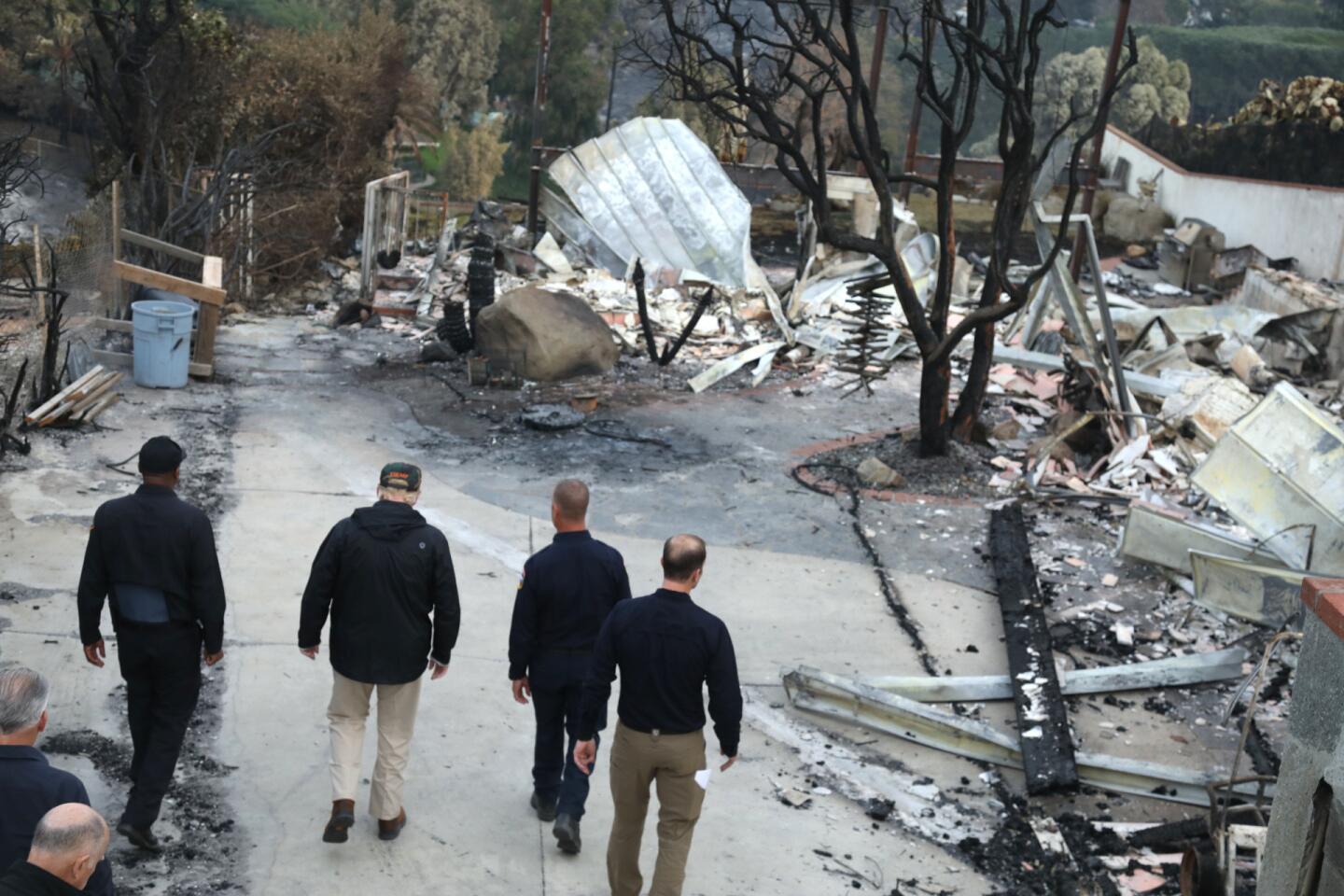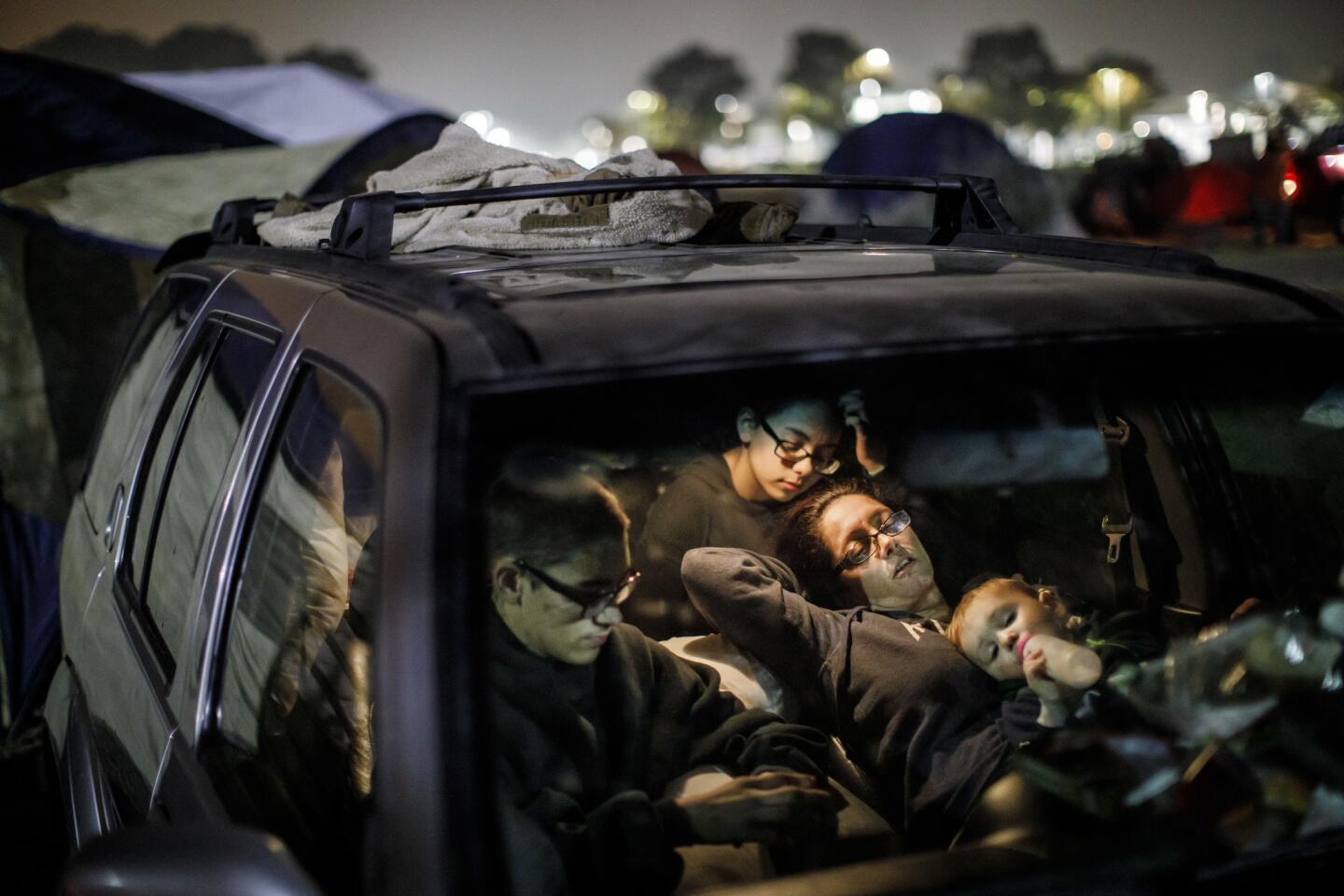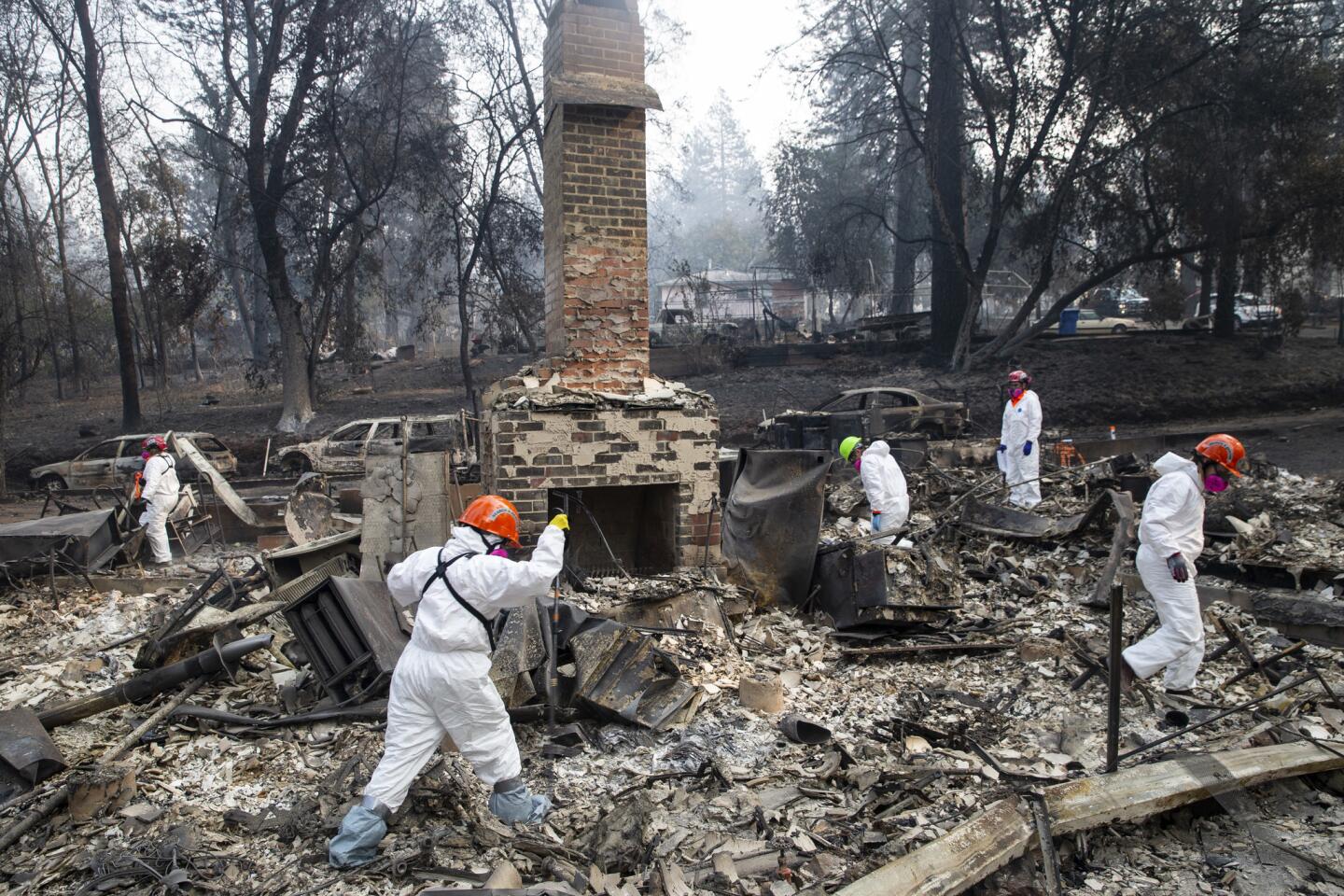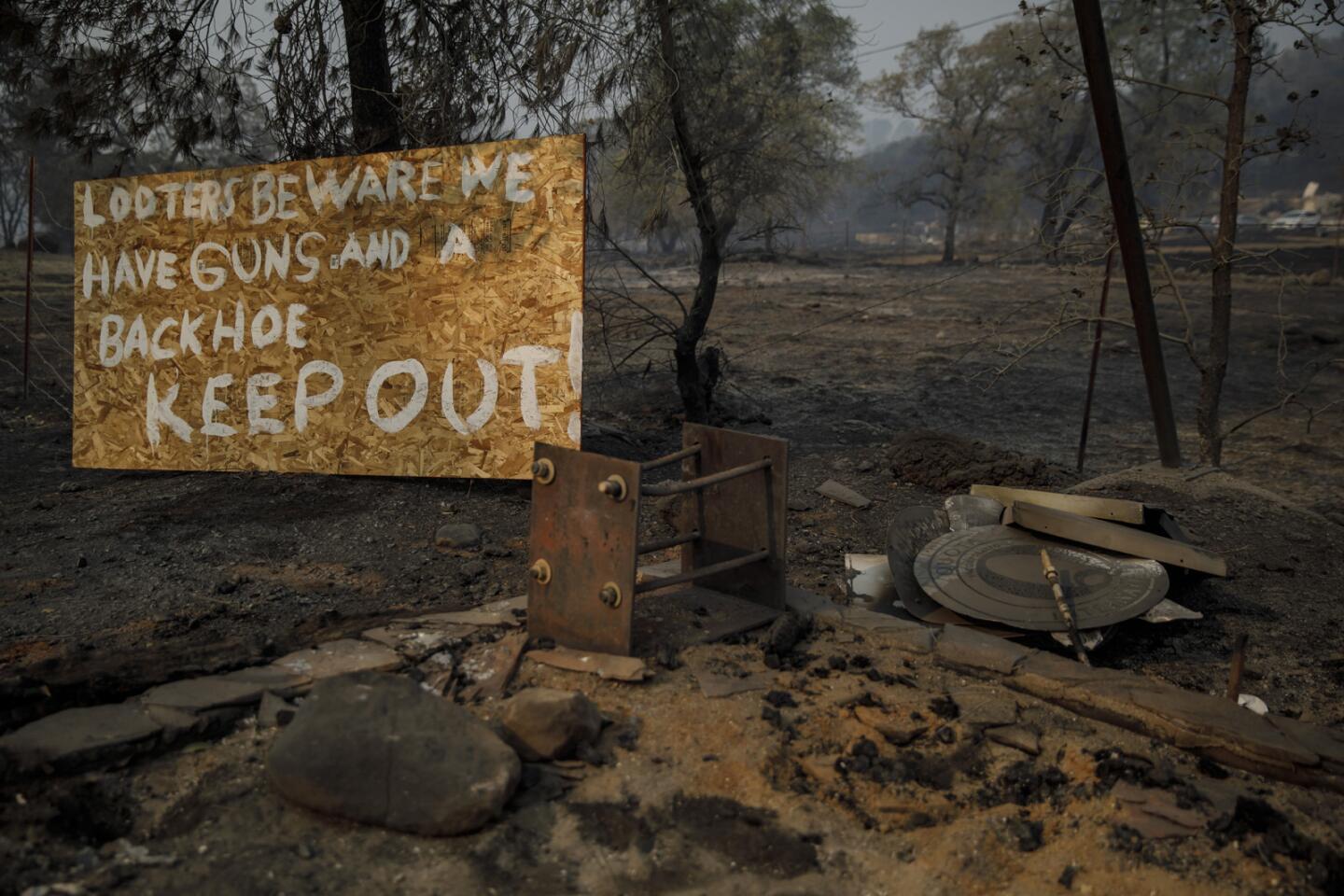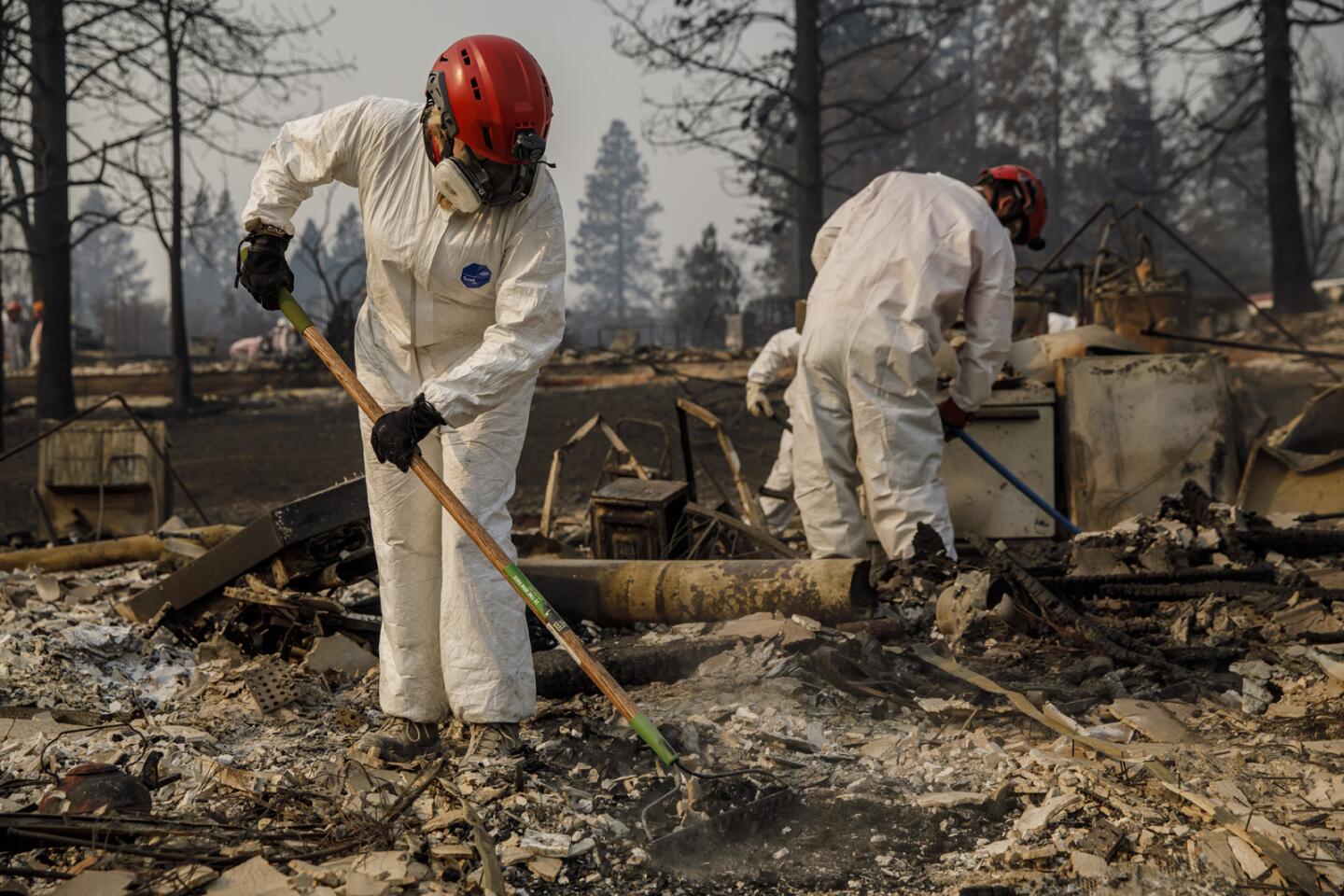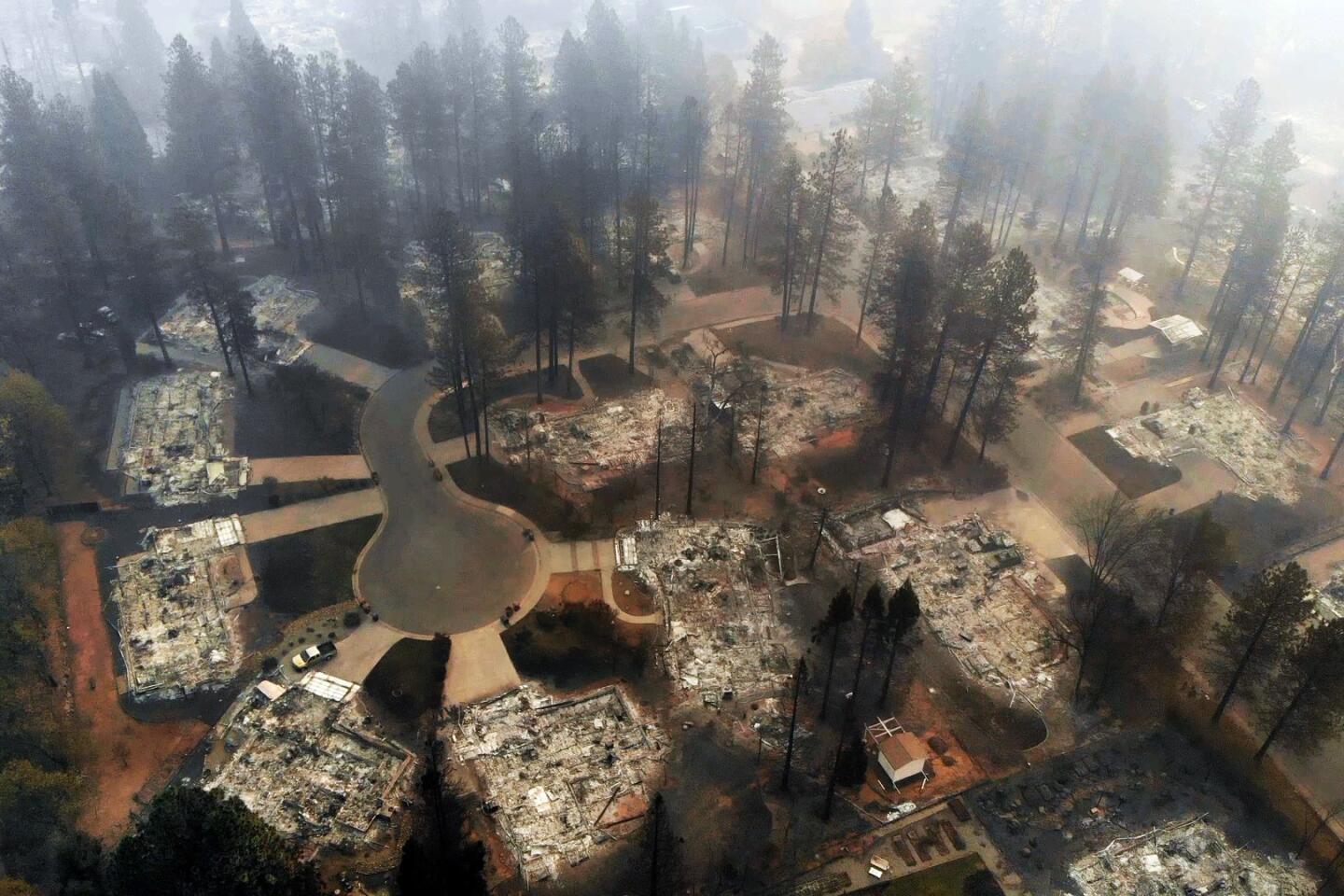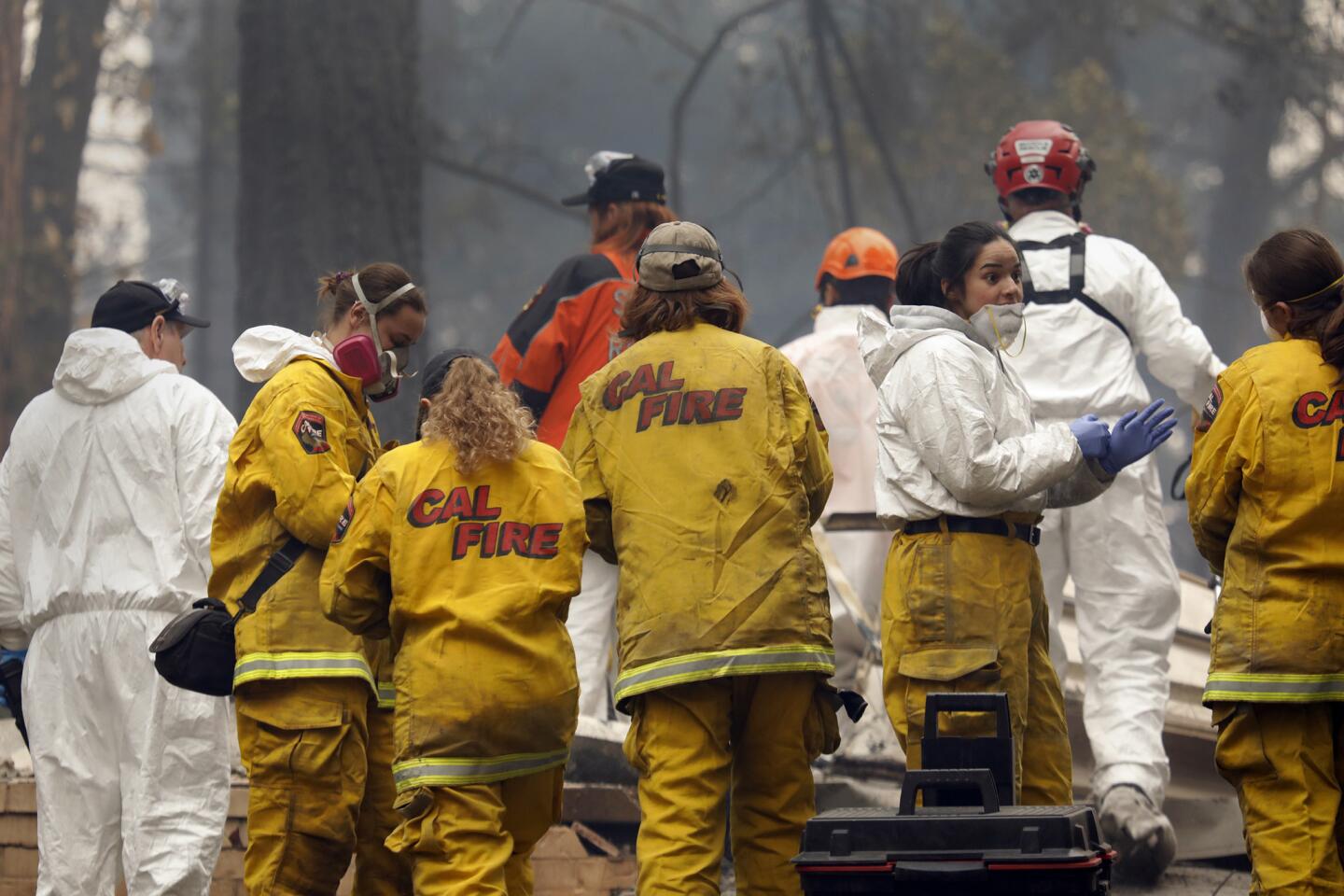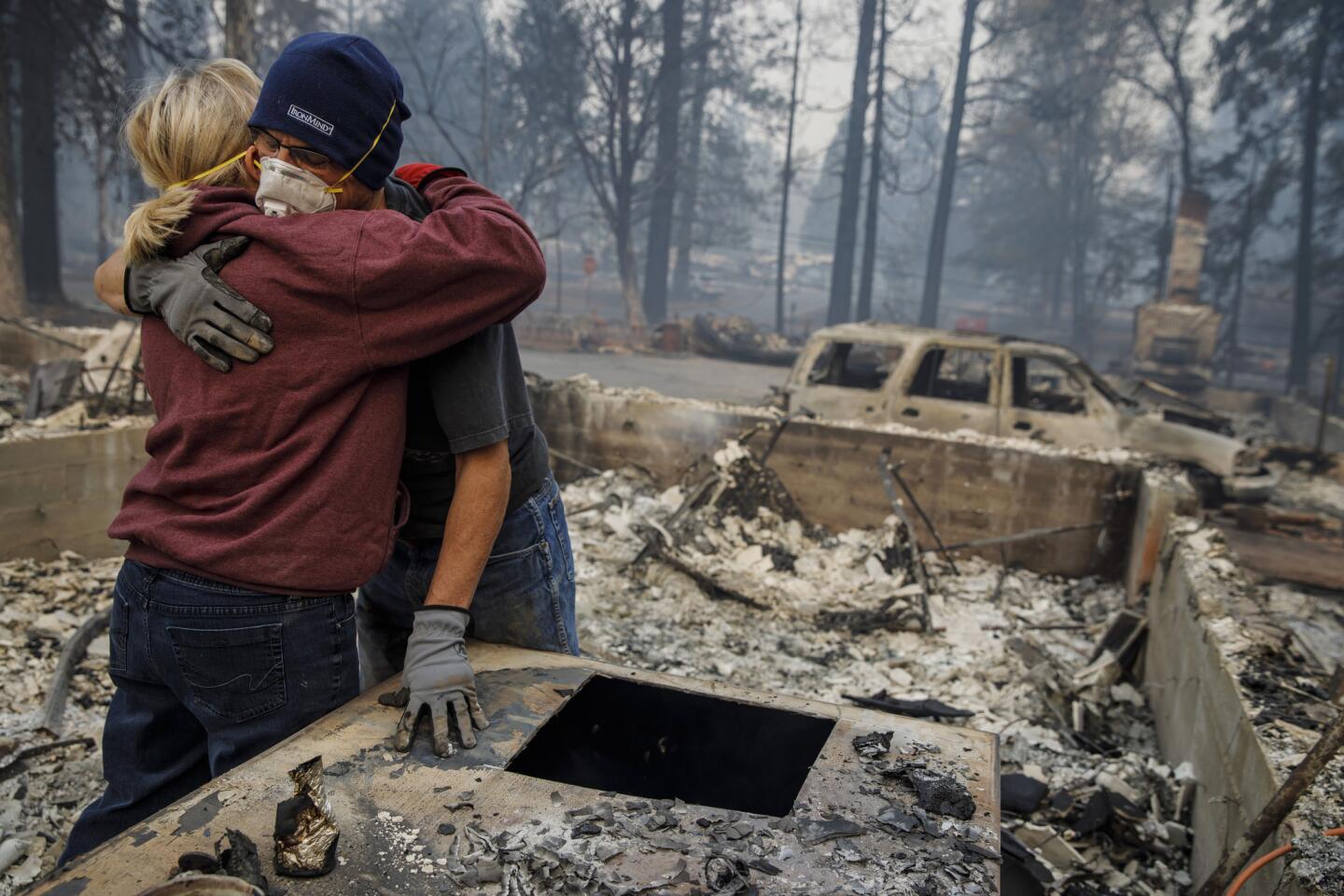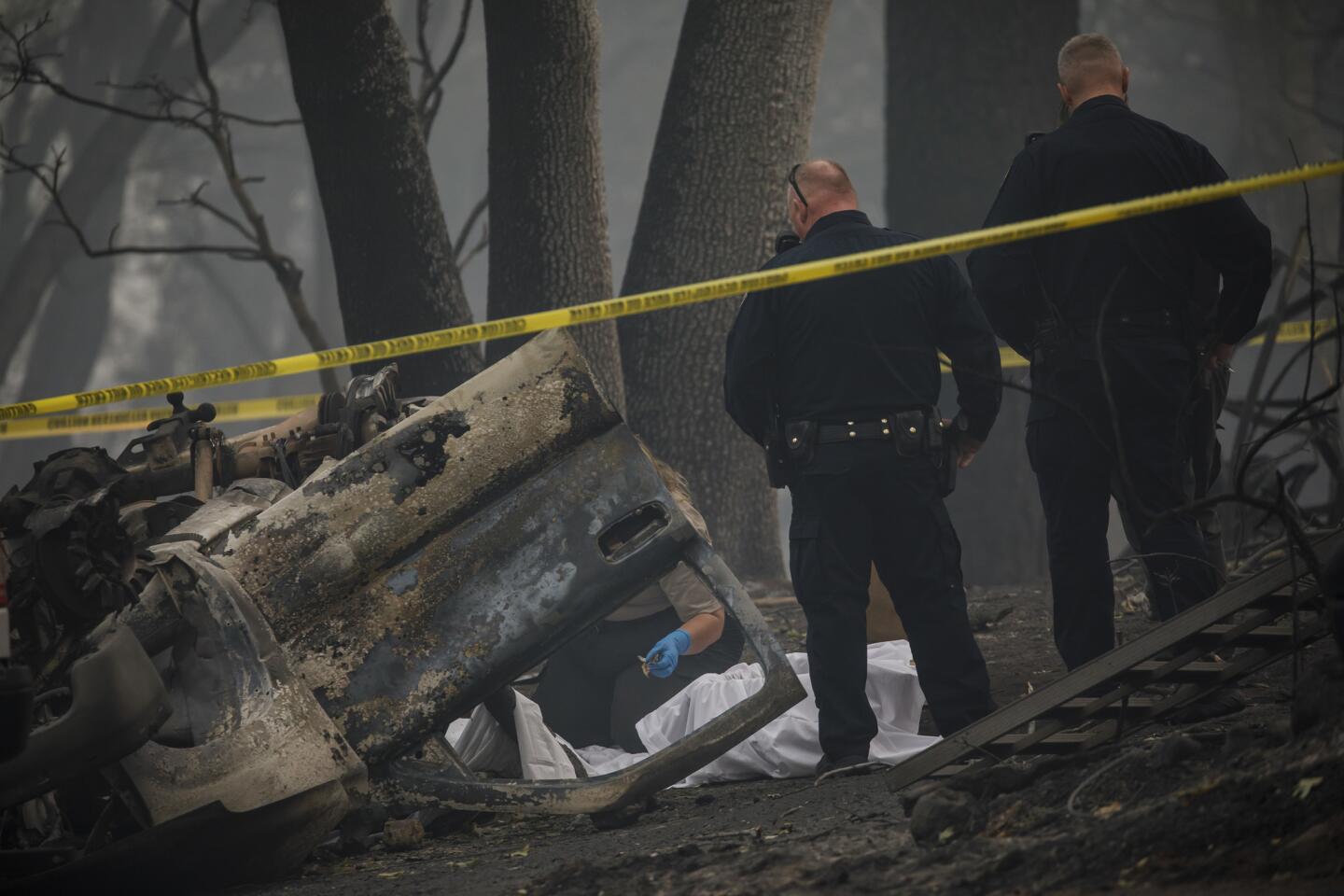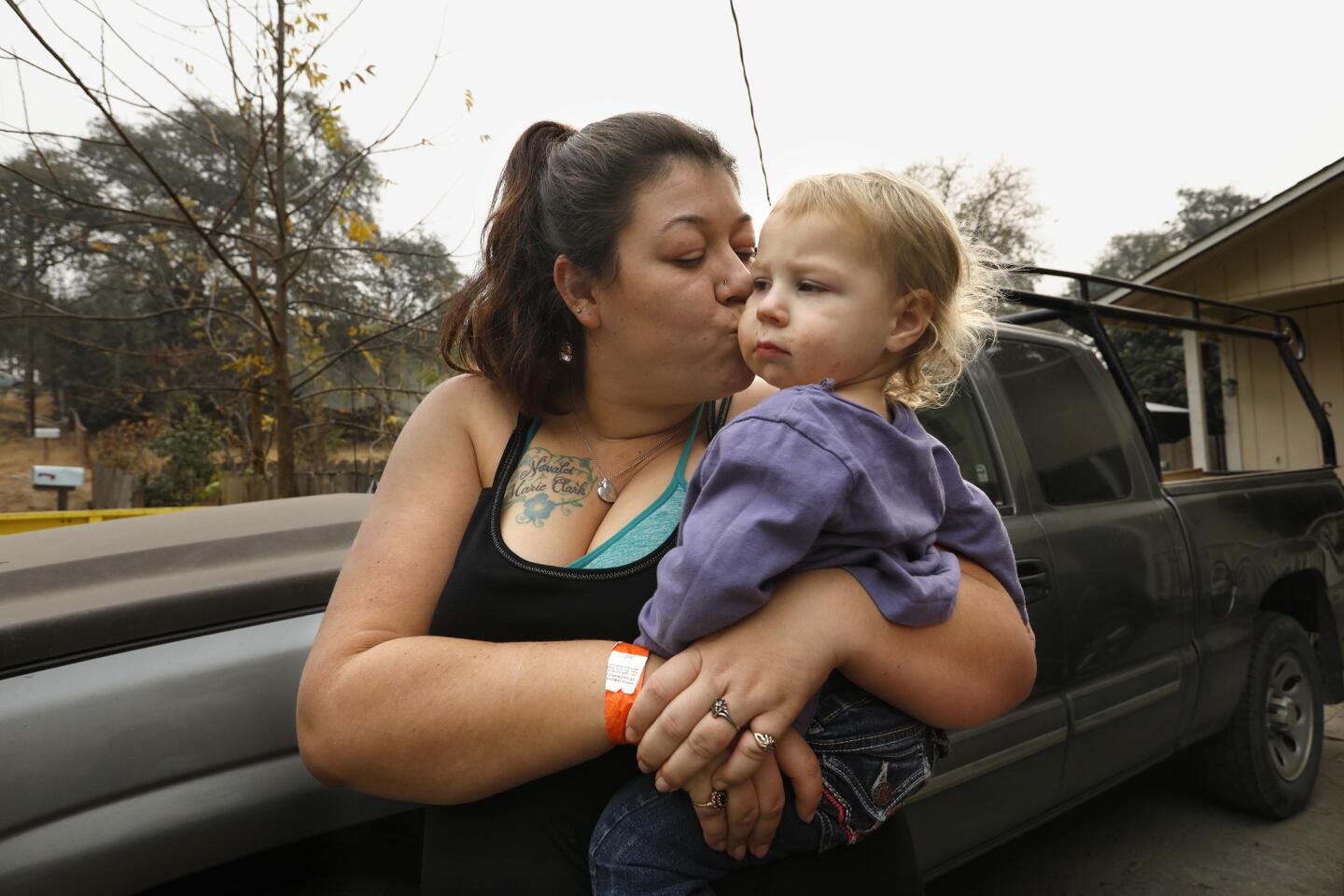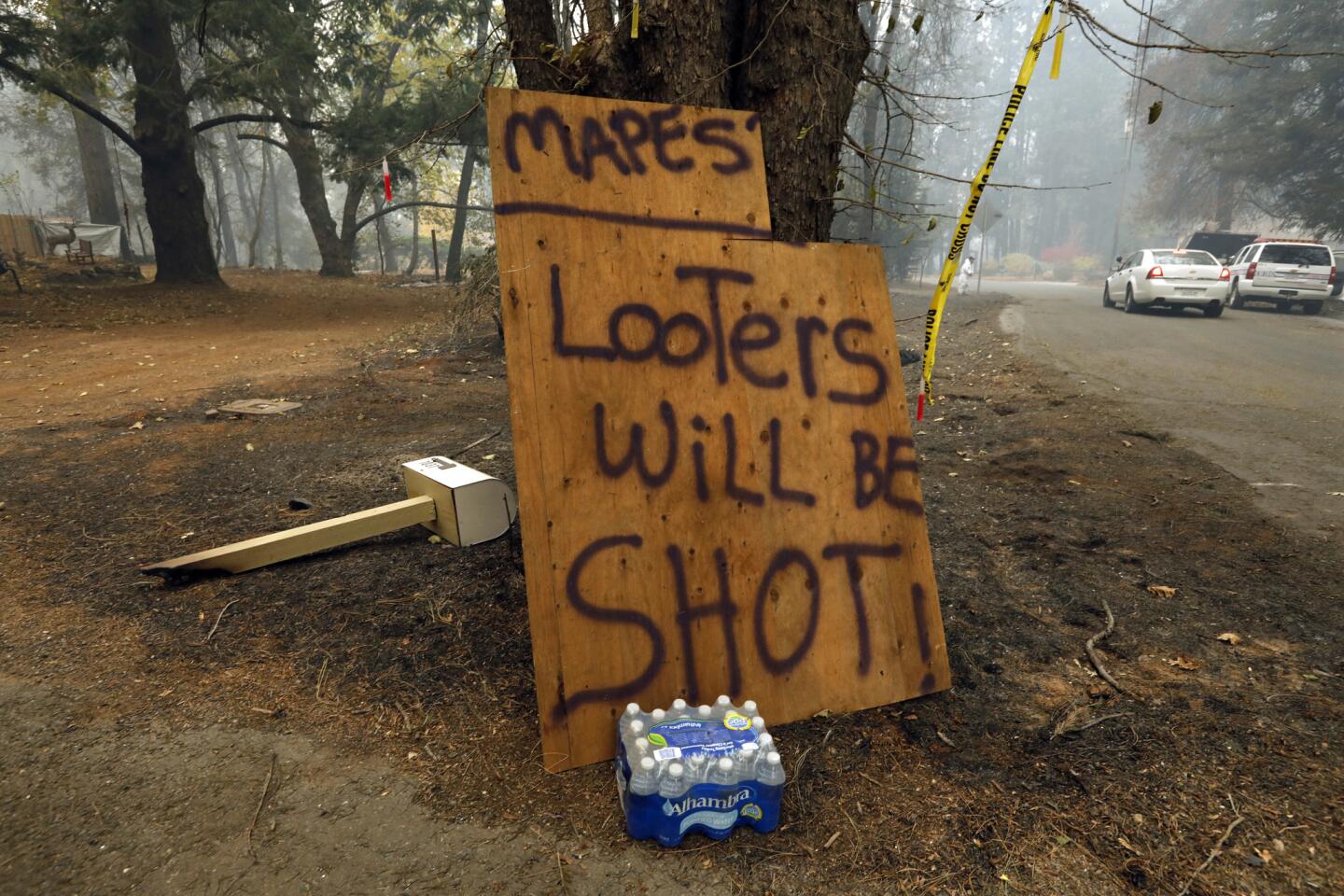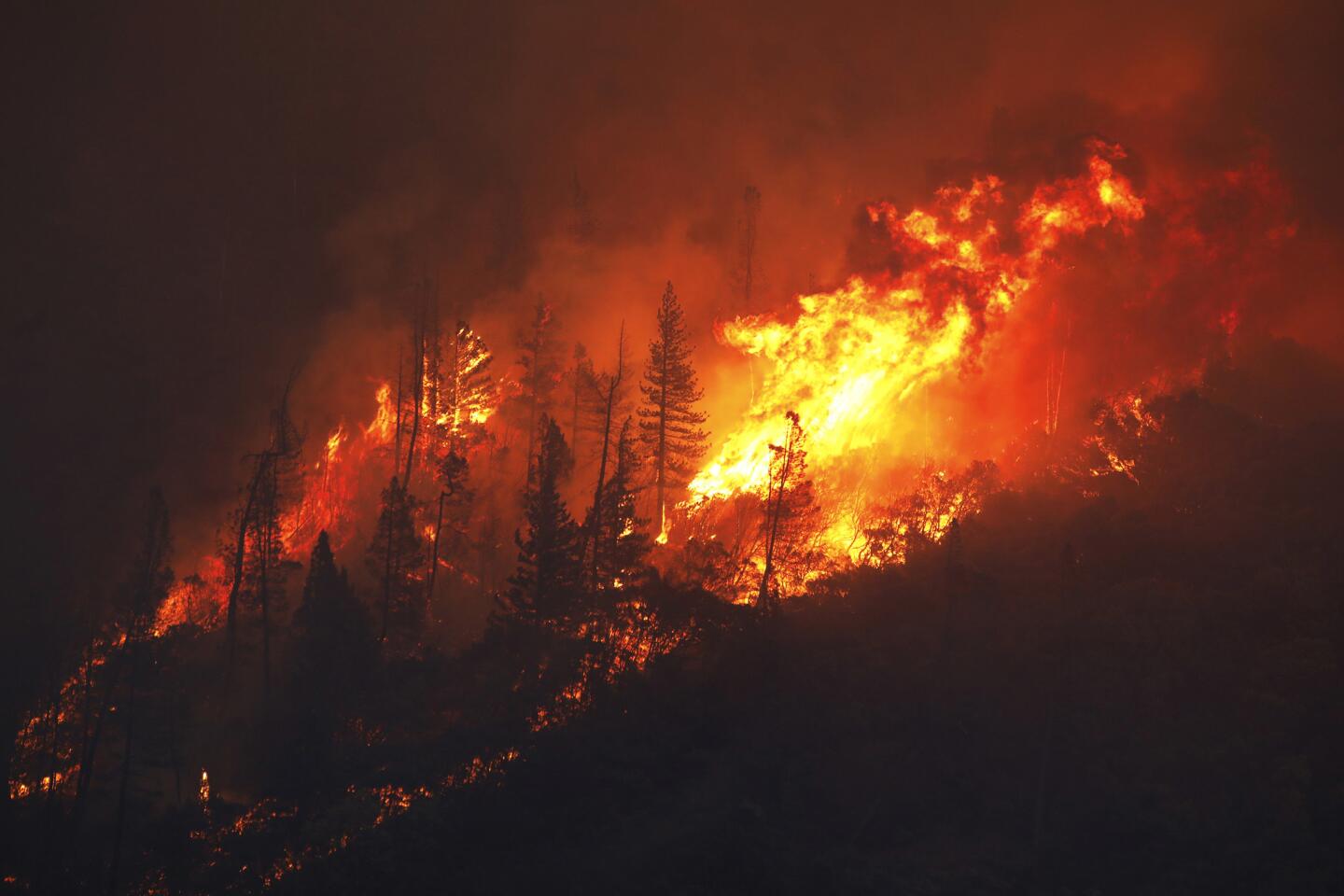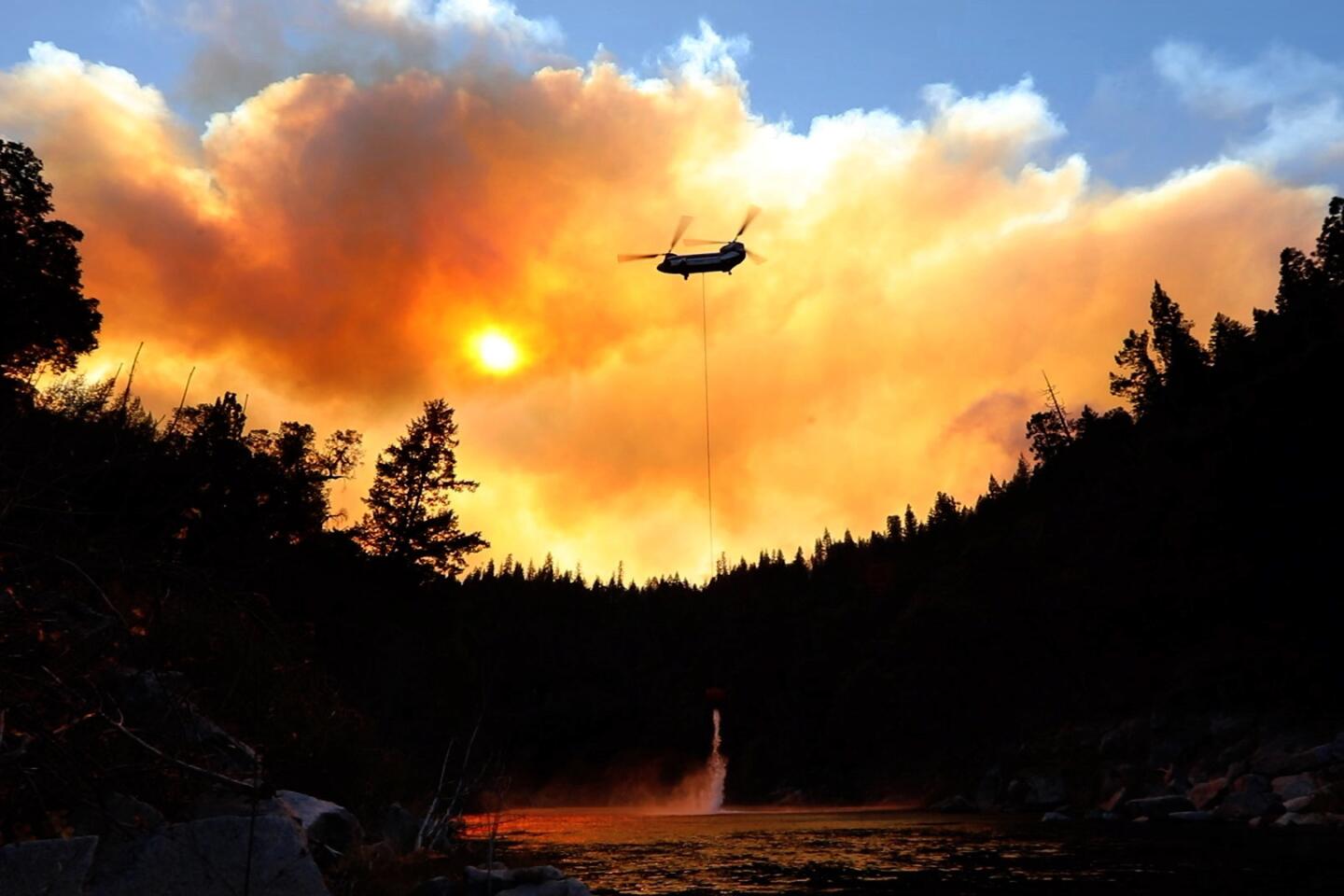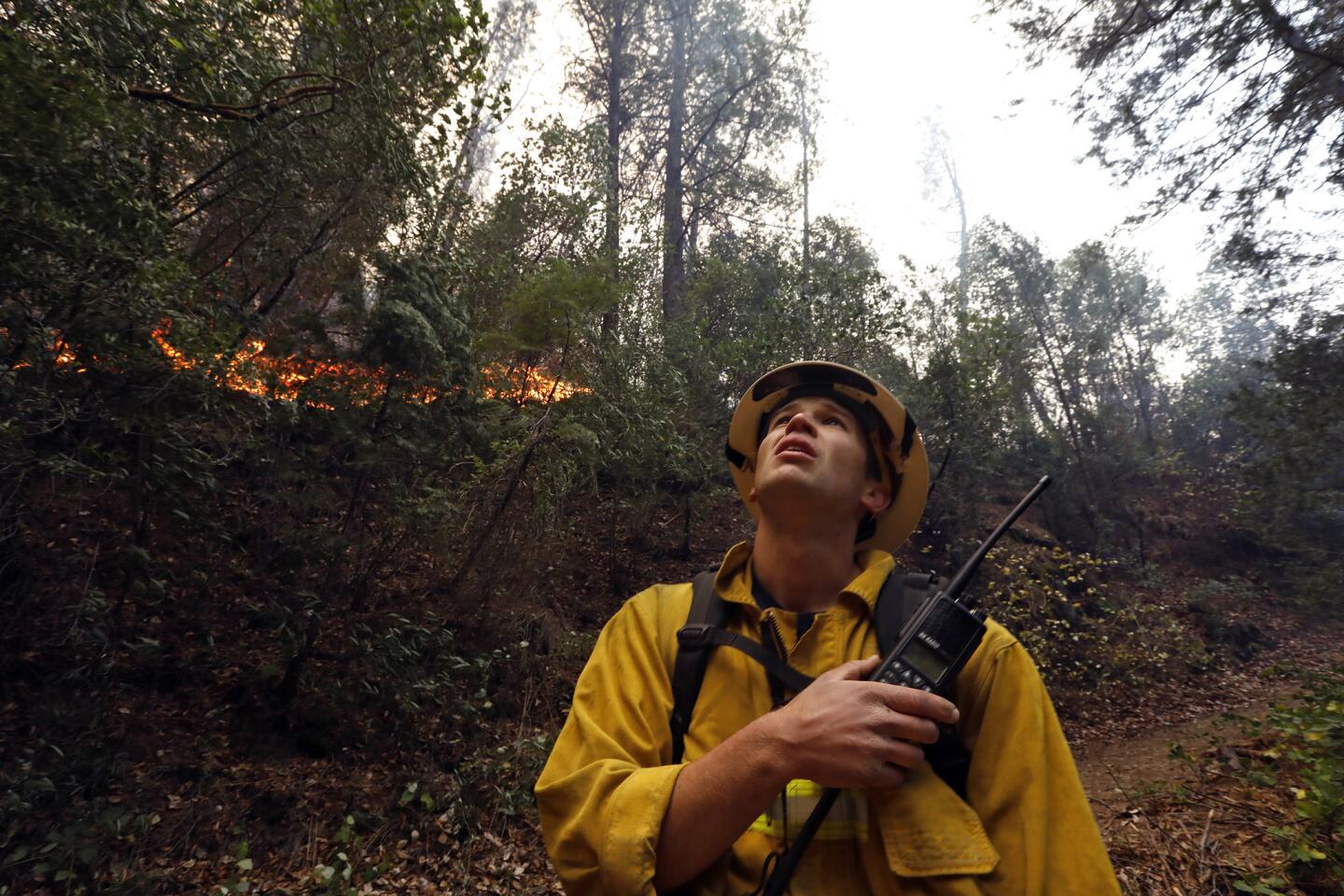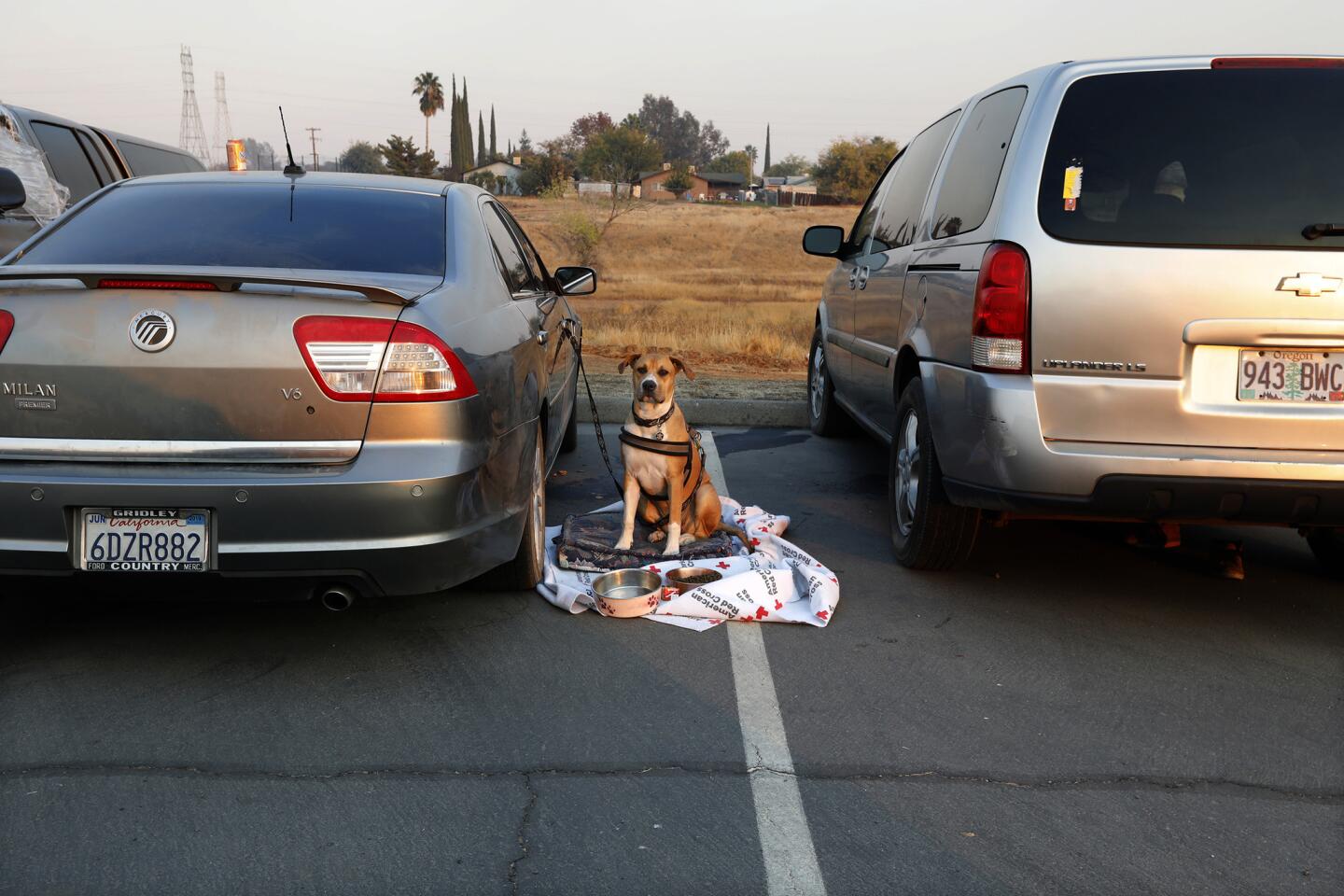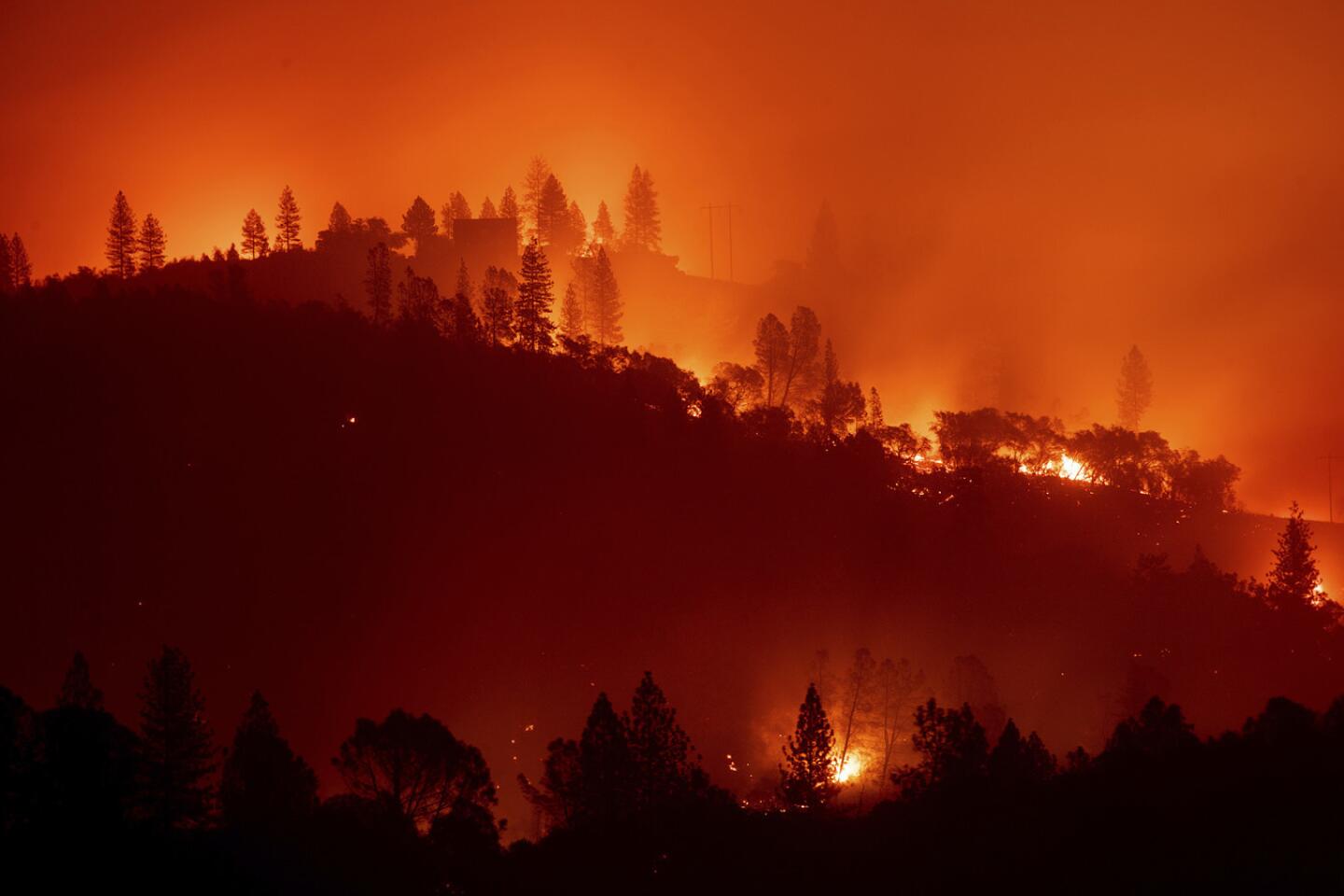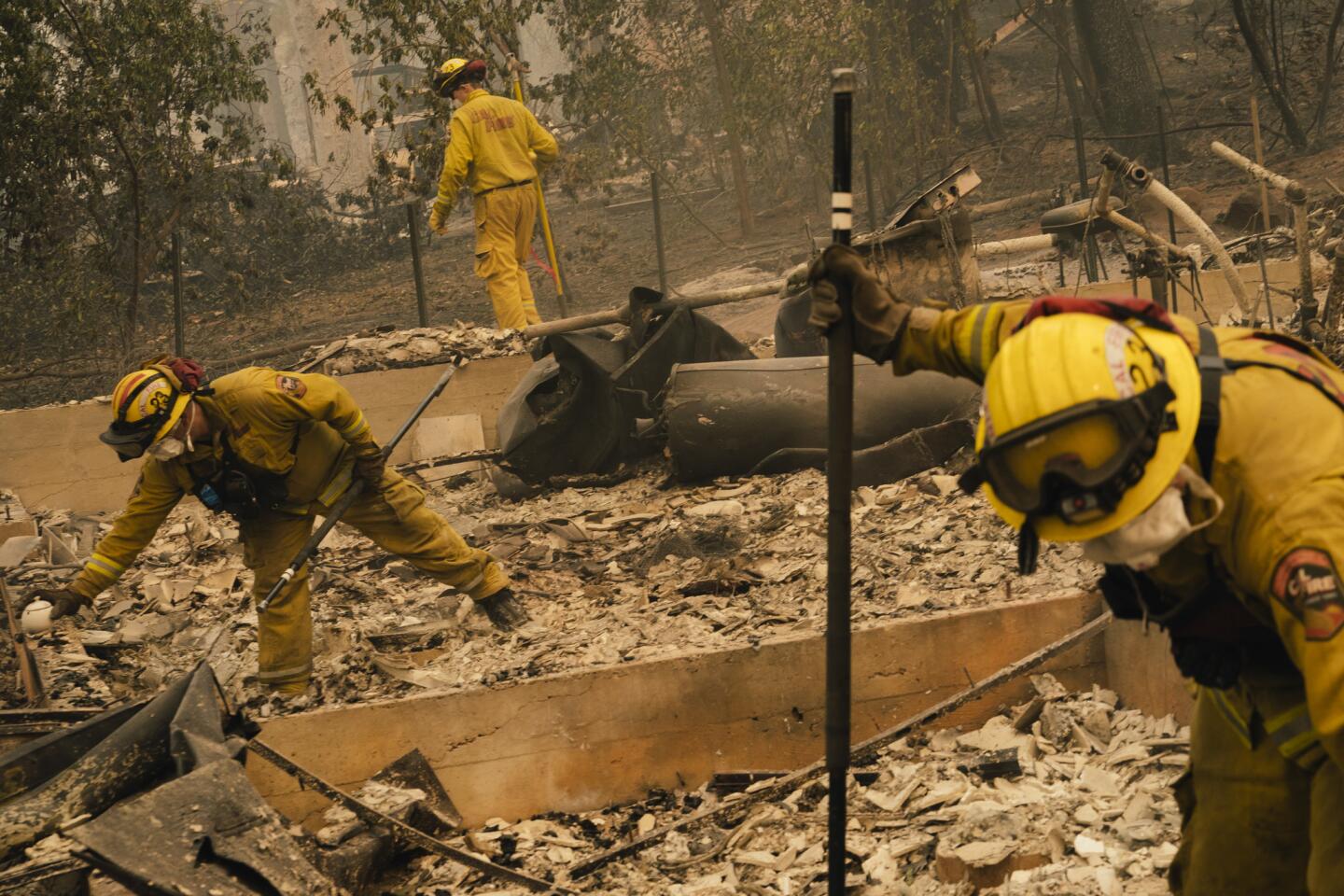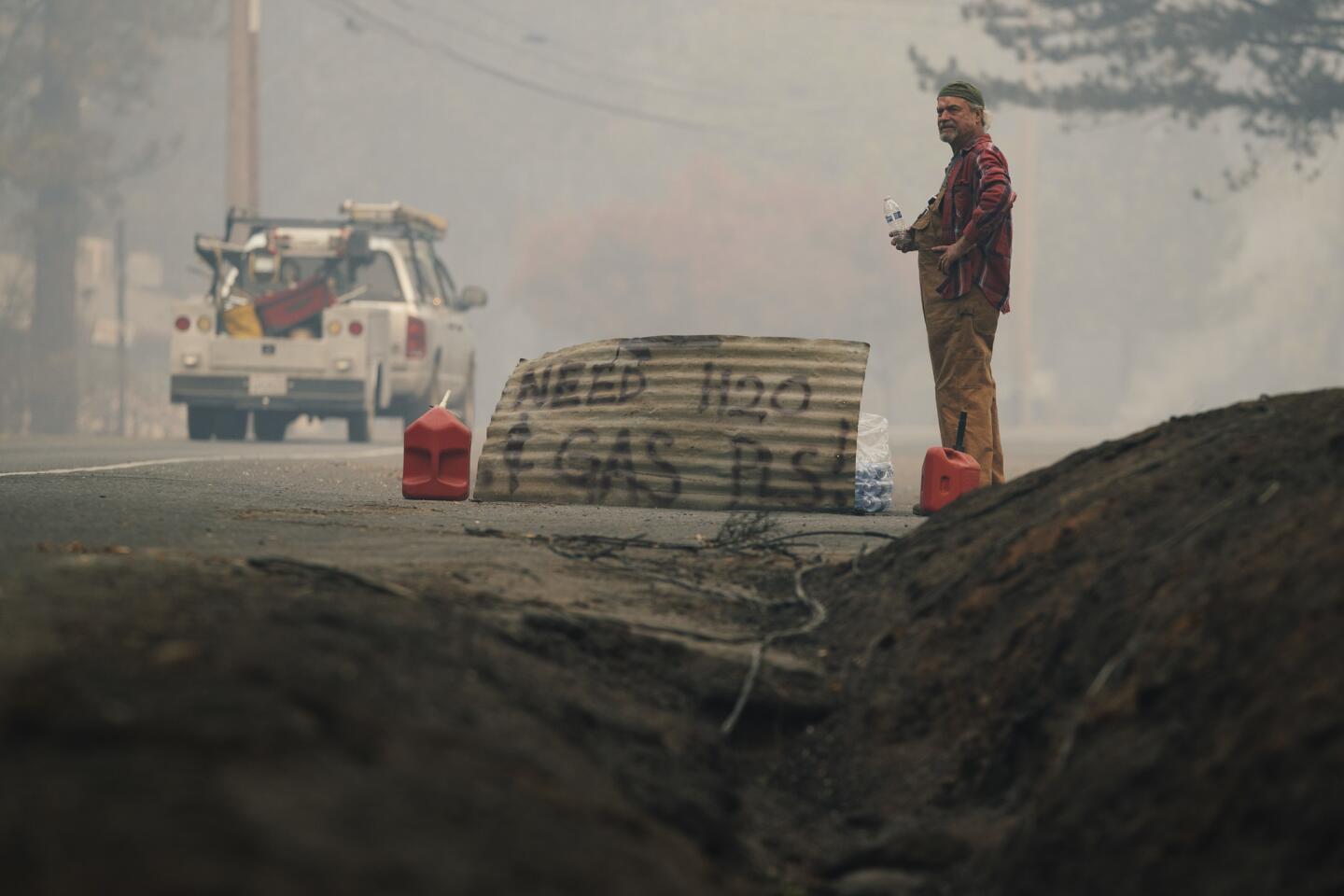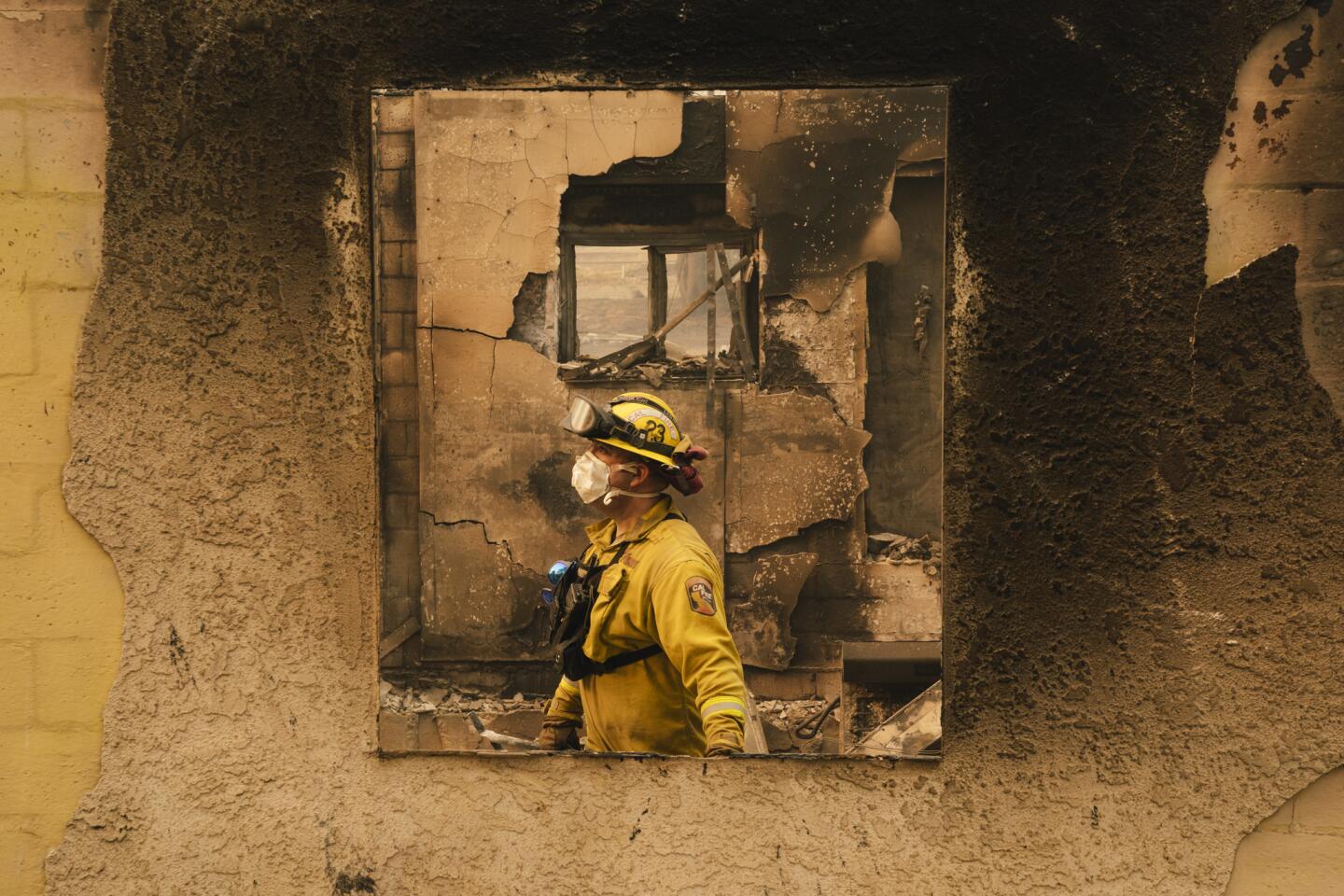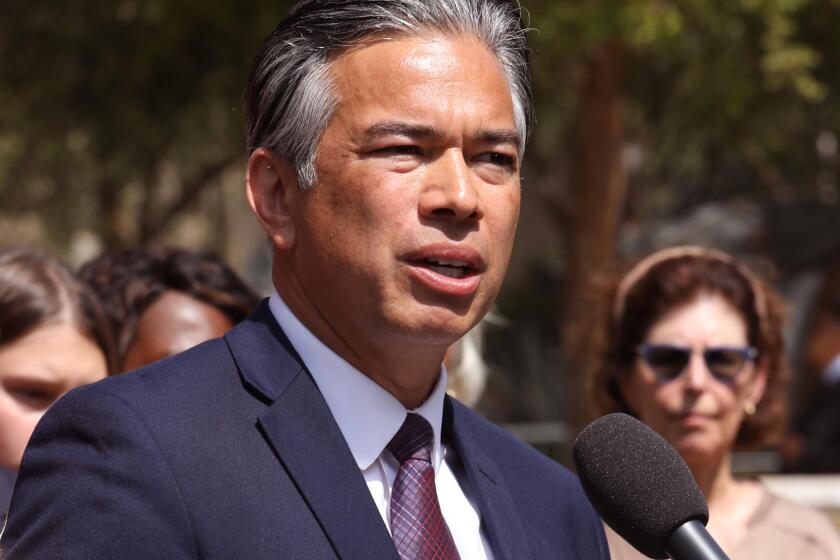California fires bring upheaval to utilities as they face massive liabilities
- Share via
The worst fires in recorded California history promise to reshape the state’s utilities as Pacific Gas & Electric and Southern California Edison face billions of dollars in potential liabilities and growing calls to overhaul their systems to better prevent wildfires.
Power suppliers in California have faced increasing financial pressure over the last decade as a series of deadly fires has been linked to system malfunctions, usually caused by powerful winds.
But the November fires — which killed at least 71 people in Northern California and at least three in Southern California — have raised larger questions about the utilities’ operations and how much of the costs for fire damage and system improvements will be shouldered by ratepayers.
State regulators say they are investigating not just the fires, but in the case of PG&E, also “the corporate governance, structure, and operation to determine the best path forward.” This has fueled new demands from critics who want the state to break up the utility.
PG&E itself has offered a dire outlook if it is found responsible for the Camp fire in Paradise, Calif., saying it would exceed its insurance coverage.
Investigations into the cause of the Camp and Woolsey fires are continuing, but both utilities have hinted that their distribution system could be a factor in the potential causes.
That prospect sent their stocks tumbling and sparked questions about their exposure because of a gap in a new wildfire mitigation law that the Legislature approved this year to help PG&E deal with massive liabilities from the 2017 wine country fires. PG&E’s stocks recovered a bit Friday as regulators question whether bankruptcy was a certainty.
A broader question also lingered on the minds of energy experts and analysts this week: In the state’s volatile wildfire environment, how can these large utilities still run their businesses amid a continued and perhaps existential threat of financial exposure?
“There’s a lot of uncertainty,” said Lucas Davis, a business and technology professor at UC Berkeley, who suggested the costs could reach into the tens of billions of dollars. “The potential liability could force these companies into bankruptcy.”
While utility issues have been linked to some destructive fires in recent years, they are not leading cause of wildfires. Other major causes include lightning, arson and ignition caused by vehicles. Improving the fire resilience of utility lines would help.
Experts say the recent spate of fires has many causes, including climate change — which is bringing higher temperature and drier brush — as well as homes being built on the wildland-urban interface.
Both companies say they are cooperating with the California Department of Forestry and Fire Protection investigation, which could last months. They also said that power incident reports filed with the California Public Utility Commission this week that noted power outages in the vicinity of the fire origins were preliminary and precautionary.
Still, industry experts predict a perilous road ahead for the utilities, especially PG&E, which is still grappling with damages related to a string of destructive wine country blazes last year in which investigators identified power lines as the spark. Its “safety culture” also remains under investigation by regulators, who signaled Thursday that scrutiny would continue.
In the short term, companies such as PG&E must worry about the most recent fires, given that a new law designed to ease the wildfire threat and reduce their financial liability doesn’t take effect until next year.
That’s when regulators would be granted the power to determine whether a utility acted reasonably when its operations were linked to a fire — a major change that could reduce damages.
But it leaves the existing system in place for 2018 and, as a result, leaves utilities vulnerable under the practice of “inverse condemnation,” which says a utility can be forced to pay millions of dollars without a strict finding of bad behavior at the start of a wildfire.
The effort by lawmakers also helped PG&E, in particular, by giving it the ability to ease its cost burden by financing its damages over time — a flexibility that might not exist for the potentially staggering damages this year.
A critical first step for both utilities is the state’s probe into the origin of the wildfires. Investigators were expected to reconstruct the cause and spread in Butte and Ventura counties.
In a filing with the U.S. Securities and Exchange Commission, PG&E notified investors about the risk of “significant liability” related to the Camp fire — exposure that could overwhelm its $1.4-billion wildfire insurance coverage.
Edison filed its own state incident out of “an abundance of caution” about an outage in the vicinity of the Woolsey fire’s suspected origin point.
The new law authorizes $1 billion in public expenditures to mitigate fire risk, including forest management and incentives for brush clearing. It also requires utilities to file new plans with state regulators on how they will prevent distribution lines from causing fires.
Experts say those mitigation solutions should include more sensitive monitoring and warning systems.
“It’s in their interest to gold-plate the system,” said Robert McCullough, whose Oregon-based McCullough Research consults with power companies across the nation. “Nobody wants a dangerous situation like we’re in now.”
More sensitive monitoring could be a source of rich data, allowing real-time analysis of potential anomalies — a tree scraping a line, causing a disturbance, for example — that might expose future problems, said Alexandra von Meier, the director of energy grid research at the California Institute for Energy and Environment.
She stressed that the companies should also improve their sharing of data so that outside researchers could apply their own algorithms and machine learning to to improve the system.
Other options, in theory, include the costly and complicated process of burying power lines to protect them from the state’s gusting seasonal winds, and following through with plans to shut off power lines when conditions are likely to spark wildfires.
The companies also must learn to navigate new rules from a recently enacted law that grants regulators more flexibility to assess their culpability in major fires.
“Even if a utility did everything right, even if they were in no way negligent, I don’t think they can ever completely rule out something like this,” said von Meier, also an adjunct engineering professor at UC Berkeley.
Death toll rises in Camp fire as survivors look for their way forward »
Twitter: @stiles
More to Read
Sign up for Essential California
The most important California stories and recommendations in your inbox every morning.
You may occasionally receive promotional content from the Los Angeles Times.
